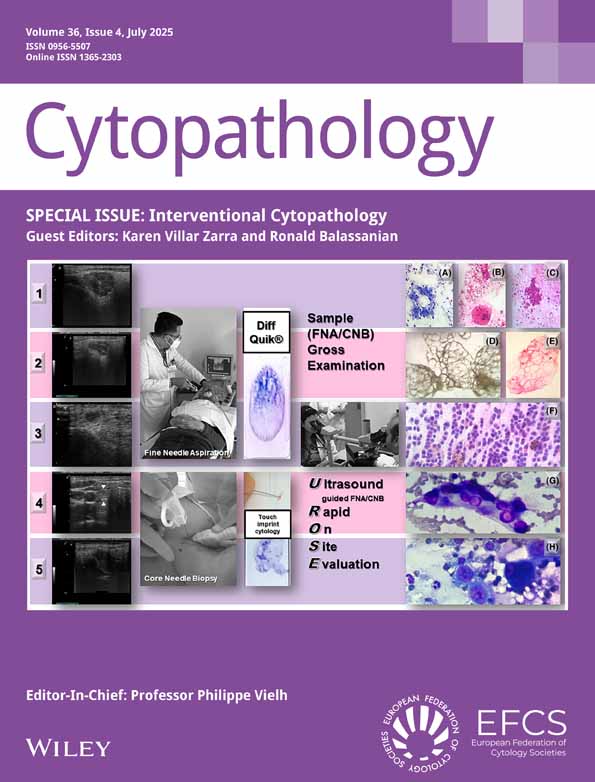Prostatic carcinoma cells in urine specimens
Abstract
enBetween January 1985 and March 1990, the Cytology Laboratory of Hanover General Hospital examined cytologic preparations from four patients which revealed cells consistent with prostatic adenocarcinoma. In three of these cases, malignant cells were positive for prostatic-specific antigen. A fifth patient's specimen contained prostatic-specific antigen positive cells compatible with prostatic origin, but without overtly malignant features. All five patients had high grade prostatic adenocarcinoma (Gleason's Grade 8–10), and urinary tract symptoms. the most useful cytologic features indicating prostatic origin were large and often multiple nucleoli.
Abstract
frLe laboratoire de cytologie de l'Hopital Général de Hanovre a examiné au cours de la période allant de Janvier 1985 à mars 1990 les prélèvements urinaires de 4 patients qui comportaient des cellules de morphologie compatible avec un adénocarcinome prostatique. Dans 3 de ces cas les cellules malignes étaient positives avec l'anticorps anti PSA. Le prélèvement urinaire d'un cinquième patient contenait des cellules positives avec l'anti PSA, compatibles avec une origine prostatique mais dépourvu de signes de malignité. Ces 5 patients présentaient tous un adénocarcinome prostatique de haut grade (grade de Gleason de 8 à 10) et des symptômes urinaires. La caractéristique cytologique la plus utile orientant vers l'origine prostatique était la présence de nucléoles volumineux ou multiples.
Abstract
deZwischen Januar 1985 und März 1990 wurden im allgemeinen Krankenhaus Hanover (USA) bei 4 Patienten Prostatacarcinome im Urin nachgewiesen. 3 dieser Fälle waren positiv für prostata-spezifisches Antigen, der eines fünfter Patienten enthielt Zellen, die prostataantigenspezifisch reagierten, ohne morphologische Charakteristika der Malignität zu bieten. Alle fünf Patienten hatten high grade Prostatacarcinome (Gleason G 8-10) und Symptome seitens des Harntraktes. Die zuverlässigten morphologischen Kriterien waren große und oft multiple Nukleolen.




